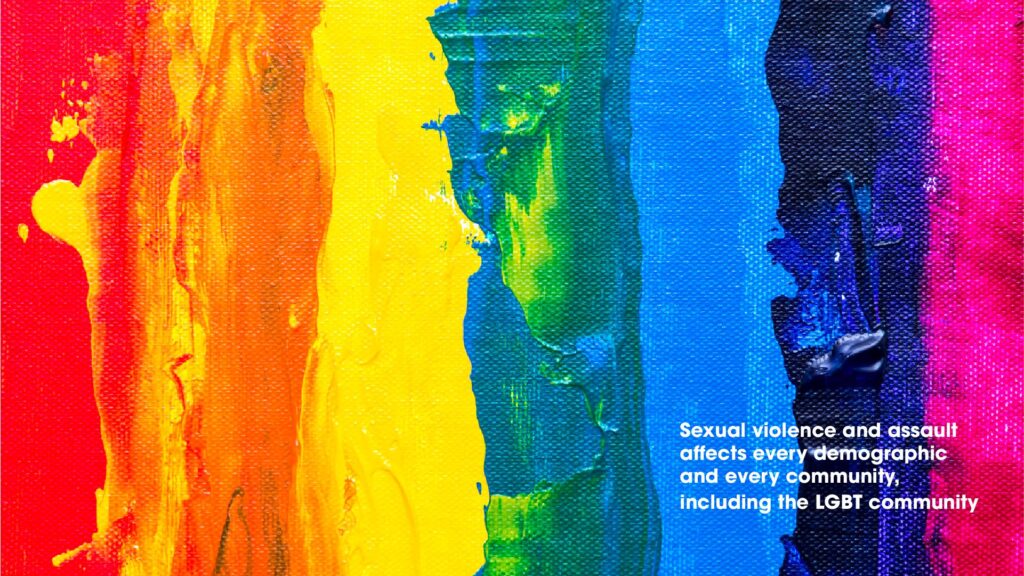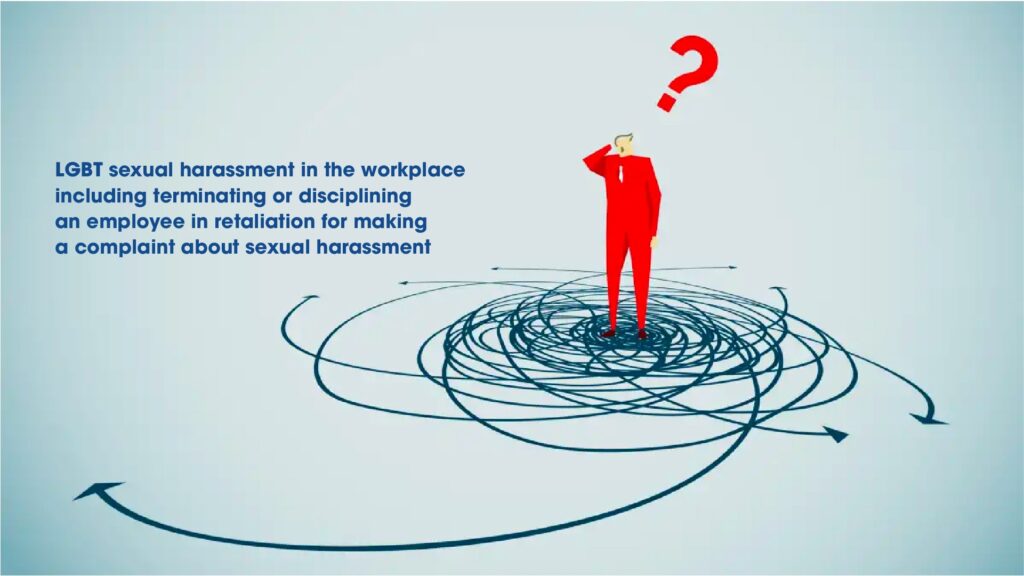Sexual violence and assault affects every demographic and every community, including the LGBT community. According to the US CDC, individuals of the LGBT community experience sexual assault at similar or higher rates than straight people. Sexual harassment in the workplace is inappropriate and unlawful. Regrettably, many employers do not take such matters seriously and do not take appropriate measures to prevent, investigate, and stop sexual harassment.

Sexual harassment in the workplace can include:
- Unwelcome sexual advances;
- Requests for sexual favors; or
- Other verbal or physical harassment of a sexual nature.
- The harassment can occur between two people of any gender, and can be initiated by an employer, co-worker, supervisor, client, or customer.
The harassment does not necessarily have to be sexual in nature and can include offensive remarks related to the person’s sex. One-time comments can turn into sexual harassment if they become frequent, severe, create a hostile work environment, or lead to the victim being terminated, demoted, or otherwise affected.
Discrimination relevants to LGBT maybe based on:
- LGBT status including:
- Lesbian
- Gay
- Bisexual
- Transgender
- Transsexual
- Queer
- Questioning
- Intersex
- Asexual
- Pansexual
- Ally
- Sex
- Familial status
- Marital status
- Domestic Partnership or civil union status
- Affectional or sexual orientation
- Gender identity or expression
- Genetic information
- AIDS or HIV status
Studies suggest that nearly half of transgender people and bisexual women will experience some sort of sexual violence/harrassment at some point in their lives. Individuals apart of the LGBT community also face higher rate of hate-motivated violence, which could also lead to sexual violence and harassment.
The US CDC’s National Intimate Partner and Sexual Violence Survey found that for people of the LGBT community:
- 46% of bisexual women have been raped
- 40% of gay men and 46% of bisexual men have experienced sexual harassment other than rape
- 47% of transgender people are sexually harassed at one point in their life.

LGBT sexual harassment in the workplace is a form of gender discrimination that can include a wide range of behaviors or mistreatment, including but not limited to:
- Treating employees of a certain gender differently, such as paying them less or failing to promote them.
- Making unwelcome innuendos, jokes or conversation that make a person of a certain gender or orientation feel uncomfortable.
- Objectifying an employee based on their appearance.
- Sending emails or images of a sexual nature.
- Making unwanted physical contact such as patting, touching, or rubbing.
- Subjecting persons of a certain gender to increased scrutiny, criticism, and harassment, or otherwise making their workplace uncomfortable.
- Using sexist slurs or comments based on LGBT status.
- Terminating or disciplining an employee in retaliation for making a complaint about sexual harassment.


